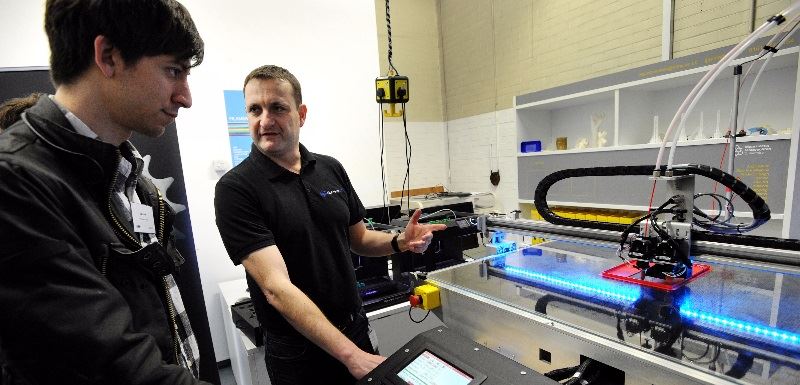![3D Printing Training [Source: Manchester Metropolitan University ]](https://fabbaloo.com/wp-content/uploads/2020/05/3DPrinting1a_img_5eb0985582566.jpg)
Charles Goulding and Preeti Sulibhavi of R&D Tax Savers discuss training needs in the growing 3D printing market.
When the Market Gives You Lemons…
In the current tight U.S. job market it is very important to encourage and create a continuous learning environment for existing 3D printing employees. In a constrained job market, existing employees are required to do more and industry leaders know it is often preferable to fill promotions and new job titles with an already proven workforce.
Employee training can range from formal off-site executive management training at leading universities to a wide variety of lower-cost trainings. Many companies use existing management to provide employee training. There are many low- or no-cost options in the 3D printing industry. One example is Fabbaloo, which offers a wide variety of timely topics that refresh daily. Many leading 3D printing product providers offer complimentary webinars on a regular basis and participants are generally notified once included on such mailing lists.
3D Printing — Technical Training
Training topics here include new and improved printers, processes, software, and materials, as well as 3D printing and its environmental impacts, design, quality assurance, and testing. The leading material and chemical companies that are entering and expanding in the market have a long history of using training to explain how to use their product for its optimal utilization. Knowledge of regulatory requirements is critical in certain major 3D markets including medical and aerospace.
![3D Printing Clinical Training Simulation [Source: Javelin Technologies ]](https://fabbaloo.com/wp-content/uploads/2020/05/3DPrinting2a_img_5eb09855de7a2.jpg)
3D Printing Business Support Process Training
Here, relevant training includes traditional business skills including sales, marketing, social media, analytics, benchmarking, accounting, finance, tax, leasing, legal, human resources, intellectual property, purchasing, information technology, big data, and the cloud. In a 3D printing company committed to continuous learning all employees should be given training opportunities.
3D Printing Adjacency Industry Training
It is important to understand the adjacent products that support and integrate with 3D printing. Relevant industries include CNC machining, injection molding, collaborative robots, digitalization, and Industry 4.0. Every industry has an adjacent industry where training could be utilized for maximum benefit to employees. Knowing how your business got there and where it is going is pivotal to developing future growth and networks.
![3D Printing Training Course [Source: LANPDT ]](https://fabbaloo.com/wp-content/uploads/2020/05/3DPrinting3a_img_5eb098562eb4f.jpg)
Trade Shows as Training Venues
Trade shows often present excellent training opportunities. Covering a trade show in a serious and comprehensive way provides an opportunity to learn about new technologies and the direction of one’s industry or trade. Witnessing the offerings of an entire industry can help employees understand and appreciate the depth and breadth of their industry. Many respectable trade shows offer excellent workshops, where participants can delve into more detail on certain topics and subject matters. Trade shows offer insight into various industry trends and topics, at a centralized location.
Creating Value from Crisis
A company that invests in training not only achieves a more capable work force, it demonstrates to its employees that it cares about them and values their contributions to the business. 3D printing is an industry where it is resilient enough to create value from such an employment crisis.
Although training is not eligible for the R&D Tax Credit, the resulting innovation that comes from training is eligible for R&D tax credits.
The Research & Development Tax Credit
Enacted in 1981, the now permanent Federal Research and Development (R&D) Tax Credit allows a credit that typically ranges from 4%-7% of eligible spending for new and improved products and processes. Qualified research must meet the following four criteria:
-
Must be technological in nature
-
Must be a component of the taxpayer’s business
-
Must represent R&D in the experimental sense and generally includes all such costs related to the development or improvement of a product or process
-
Must eliminate uncertainty through a process of experimentation that considers one or more alternatives
Eligible costs include U.S. employee wages, cost of supplies consumed in the R&D process, cost of pre-production testing, U.S. contract research expenses, and certain costs associated with developing a patent.
On December 18, 2015, President Obama signed the PATH Act, making the R&D Tax Credit permanent. Beginning in 2016, the R&D credit has been used to offset Alternative Minimum tax for companies with revenue below $50MM and now, startup businesses can obtain up to $250,000 per year in payroll cash rebates.











